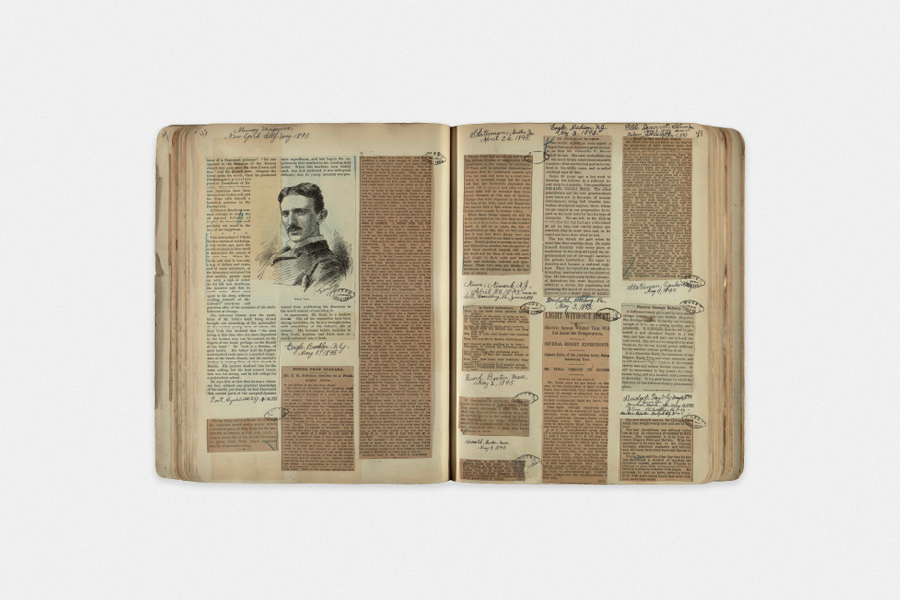Legacy
Press Clippings
As part of Tesla’s legacy, there also arrived from America perhaps the most valuable part of the library collection – press clippings. While the books and magazines owned by Nikola Tesla allow us to assess his interests in the field of science and his literary taste, the clipping give us insight into the social context and the kind of response he received, both from the public and in professional circles.
The collection of press clippings and newspapers from the personal legacy of Nikola Tesla consists of bound and unbound clippings, pages from newspapers with articles marked for clipping, unannotated pages and entire issues of newspapers.

The bound clippings are in 57 individual albums and it is estimated that there are more than 20,000 of them. An original record of these is kept in a card index according to subject. Tesla instructed his associates and secretaries to clip articles from periodicals, most of which dealt with his work and activity in Europe and the USA. The articles are primarily classified by subject (energy, electrochemistry, teleautomatics, X-rays etc.) and, within that, chronologically. Every article is annotated by hand with the source of the clipping. Detailed inspection of this material has established that Nikola Tesla also engaged a specialized press clipping service.
As well as articles relating to Nikola Tesla, here may also be found research on other scientists and inventors who were working in the same fields of science and technology.
The methodical way in which these articles are classified bears witness to Tesla’s great devotion to, and skill at, collecting and utilizing information. If we also include all other sources of collecting and exchanging information, it becomes clear that Nikola Tesla created an analog version of what today we call the Internet. That is to say he had his own organized network of information which was indexed, described and arranged in an appropriate place within the entire system of his sources.
As well as containing unique information about Tesla’s life and work, these articles also reflect the social and scientific climate in which Tesla conducted research. For any historian of science, they are an essential source of information about events in science and technology at the end of the nineteenth and the beginning of the twentieth century, all available in one place.
